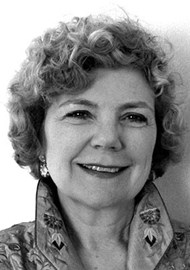Occasionally at medical meetings, a member of the audience will be unfortunate enough to fall ill. An elderly ex-obstetrician of the Queen had a transient ischaemic attack at the podium of the Royal Society of Medicine in front of a glittering audience of the great and good in medicine, who failed to recognise and / or to act when his speech ground to halt and he looked vacantly into space for some minutes. In the end, his wife came up and gently led him away.

Another memorable instance occurred in Arles, Provence, where I had been invited to lecture by Pierre Rouvier, one of the most charming and ‘sympathique’ of French ENT surgeons. I was speaking to an audience of 300 or so allergists and ENT surgeons when I noticed that in the third row, a gentleman had suddenly slumped. Strange, I thought, to faint whilst sitting down – something which also occurred to his neighbour who nudged him, whereupon the chap fell forward, doing a very good impression of someone who had died. At this point, I stopped my lecture to draw attention to the problem. By now, his neighbour had opened the poor man’s shirt to reveal a sternal scar from a previous cardiac procedure. The French audience were in a frenzy of disinterest and complete inactivity. Whilst the majority took advantage of the pause to light up their Gitanes, one sole doctor, young enough to remember the rudiments of resuscitation, leapt forwards to administer mouth-to-mouth. I suggested to the organisers that perhaps we should clear the lecture theatre and contact the emergency services. As we left for what was described as a ‘déjeuner tôt’, the SAMU services burst in and the patient was whipped off to ICU where he spent the next three days, described as alive ‘mais un peu chocé’.
Following lunch, I was asked to restart my lecture after being introduced in somewhat poor taste as a ‘femme fatale’, and the story spread amongst my French friends that someone had died whilst I was lecturing. This rumour gathered some traction as it was definitely one up on projectors breaking, slides bursting into flames or rats running across the stage. As a consequence, on subsequent occasions when lecturing in France, I would conclude my presentation by saying: ‘Some of you will know that during a past lecture, someone in the audience had a cardiac arrest, so I am very pleased to see that on this occasion, you have all survived my talk – are there any questions?’. In Marseilles about a year later, at this point a hand shot up and a man got up to say ‘Madame, I would like to tell you that I was that man who had the heart attack and I have come back to hear the end of your lecture’. Needless to say, he received a standing ovation and I think that also counts as the perfect example of a 360° audit!
As a postscript, the young doctor who had been able to do the initial CPR was sufficiently enervated by the whole debacle that he subsequently became a successful record producer, bought a Ferrari and moved to Monte Carlo. And I have had a ride in that Ferrari.
This series of stories is dedicated to those of you with whom some of these moments were shared (or endured) and, above all, to my amazing and long-suffering husband, David Howard. Most of you know him as an exceptional head and neck surgeon but, since Covid, he has been involved in a large multi-speciality international charitable project reintroducing negative pressure non-invasive breathing support which could transform the management of respiratory disease all round the world. If you are interested, please visit www.exovent.org for further information and, if you enjoy the stories, please consider donating to the charity through the Exovent website (Click DONATE on the home page drop down menu).





